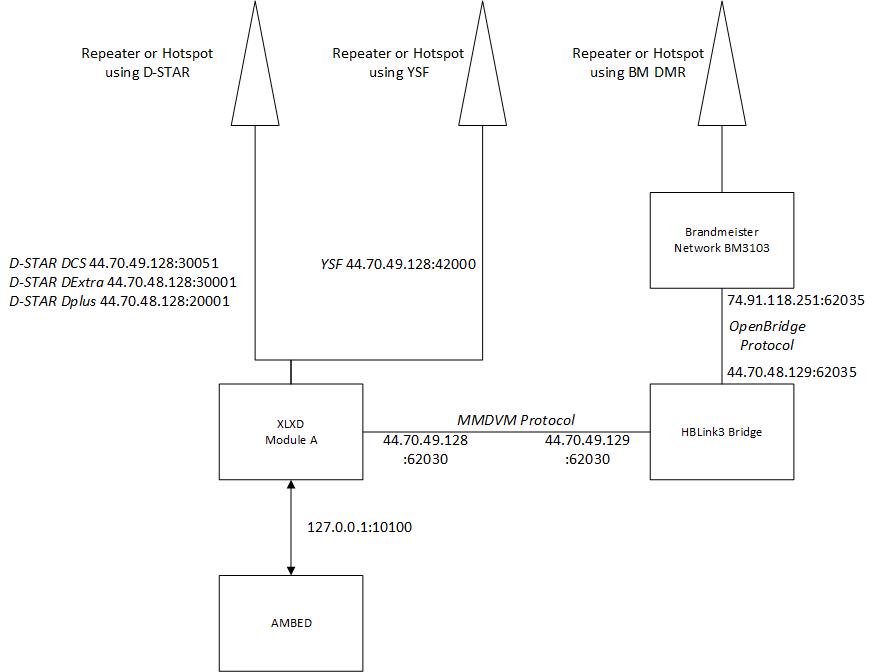Unfortunately, a few weeks after XLX330 Transcoding Stabilized the system starting having problems again. The problems continued to be primarily on DMR transmissions. However it was only during busier times, such as a nets – especially when there were collisions from different repeaters.
After some intensive testing, the original premise of the one DVStick being bad was incorrect. What’s been determined is that for some reason the IO subsystem of even the Pi4 can’t keep up with the transcoder data streams – which in turn locks up something inside of the transcoders themselves. The DVStick33 was hooked up to a older-but-still-good laptop and a series of test streams ran for a day without issue. The XLX330 xlxd process was moved to four processor Intel Core i5-2340 system with 8Gb of RAM. Simulations of D-STAR and YSF traffic went off without a hitch.
The other issue was dealing with hiccups in the DMR stream from Brandmeister. If there was any glitch in the matrix, xlxd would have to be restarted to re-synchronize the DMR interlink. The XLX-based interlink was replaced with putting DVSwitch’s HBlink3 Bridge in. Between xlxd and HBlink, the DMR stream rides the MMDVM protocol. Between HBlink and Brandmister, the DMR connection uses the OpenBridge protocol. The OpenBridge protocol was designed to be session-agnostic. There is no logon or session or state… just a stream of audio data. The directions for HBLink3 are a bit hard to understand. Thanks to Doug Gooden W4DBG of the Alabama Link who helped with HBlink3 configuration.
The last change is the system now reboots daily at 4:15am. There still seems to be some cruftiness between xlxd and ambed and the dongles that causes audio failures over time. Doing a reboot clears the cruft.
The system has been online for a month now and so far so good!




